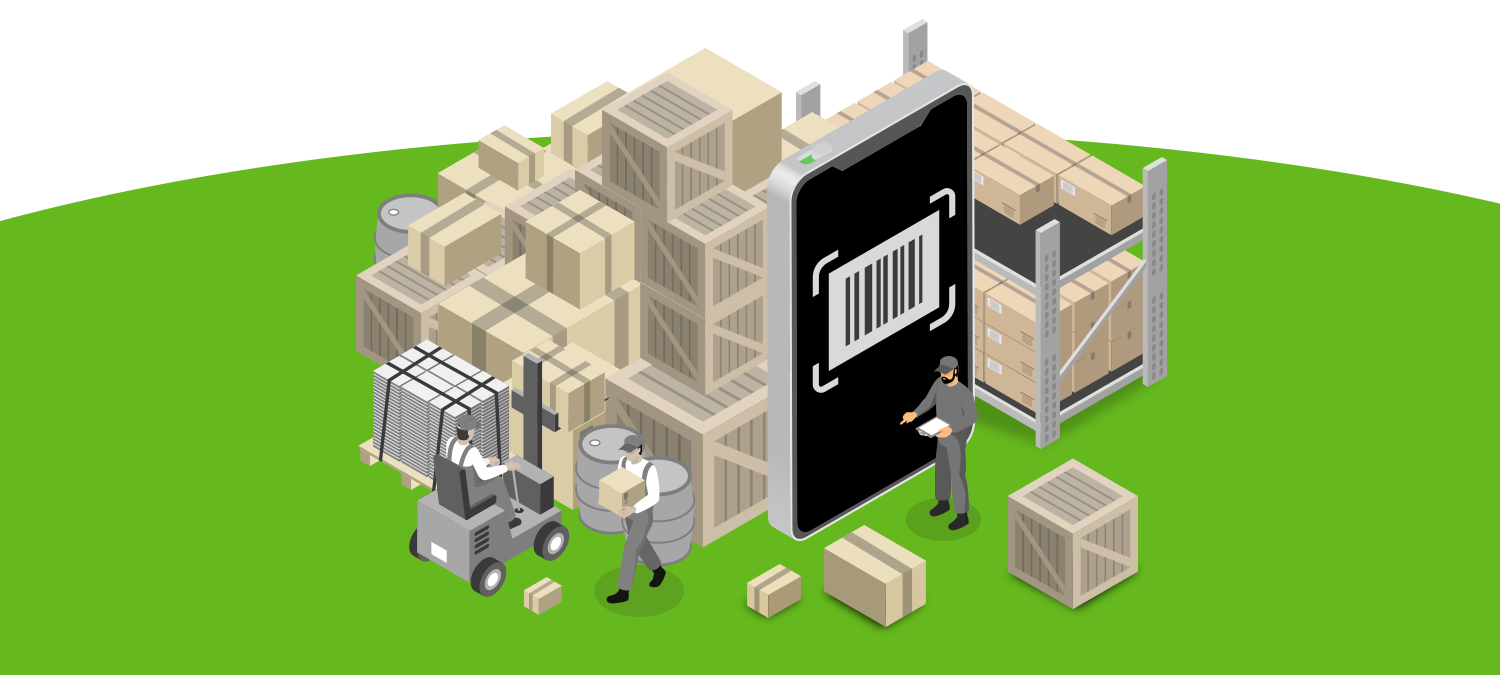Operating an extensive network of warehouses, 3PL companies often face challenges in managing such complex infrastructure. Right from the stage of receiving goods in the warehouse, they encounter the question: how to efficiently distribute and place them to simplify the work for employees, reduce order assembly time, and ensure uninterrupted fulfillment of customer requests?
The efficiency, accuracy, and promptness of your warehouse operations will depend on how effectively you can organize this process. Ultimately, you will be able to meet customers’ needs for fast delivery and gain a competitive advantage. In our article, we will explain what slotting is, how it can benefit your company, and how to correctly allocate resources in your 3PL warehouse to free up additional space and reduce operational costs.
- What is Slotting?
- Levels of 3PL Warehouse Slotting: Micro and Macro Slotting
- Benefits of 3PL Warehouse Slotting
- 3PL Warehouse Slotting Methods: What Characteristics Are Considered When Placing Goods?
- How to Organize the 3PL Warehouse Slotting?
What is Slotting?
Slotting is a method of systematic organization and placement of goods in a warehouse, taking into account various factors such as demand, product characteristics, storage type, and other parameters. Its primary goal is to optimize the use of available warehouse space and resources to the maximum.
Slotting allows for the orderly placement of goods to minimize the time and effort required for picking, reduce the risk of errors, and enhance warehouse efficiency.
Levels of 3PL Warehouse Slotting: Micro and Macro Slotting
The process of slotting requires both a strategic view of overall organization and attention to the smallest details. To organize successful warehouse operations, companies can apply a two-level slotting system: macro slotting and micro slotting.
Macro slotting is the strategic part of slotting that determines the general logic and planning for the placement of large groups of products in the warehouse. Within macro slotting, decisions are made regarding which products will be stored in which parts of the warehouse, which work zones are allocated for different product categories, and how the overall flow of goods through the warehouse is organized.
Micro slotting is the tactical aspect of slotting that focuses on the more detailed optimization of the placement of specific products within the macro structure. It takes into account more specific factors such as box sizes, pallets, physical characteristics of products, and their flow patterns. Micro slotting determines where individual products will be placed on the shelves or in the bins of the warehouse to minimize movement and simplify picking.
Benefits of 3PL Warehouse Slotting
Slotting, as a method for optimizing product placement in a warehouse, offers numerous significant advantages for 3PL companies.
1. Fast order picking with minimal errors
Thanks to optimized slotting, warehouse staff can easily locate and pick the required items. This reduces the time spent on order picking and allows the company to expedite the process of preparing goods for delivery.
Moreover, due to the logical placement of items, the likelihood of confusion and errors is minimized. Each order is more precise and aligned with customer needs.
2. Warehouse space optimization
By determining precise locations for each item and logically grouping products with similar characteristics, slotting allows for the most efficient use of every area within the warehouse. As a result, you can free up additional space and use it to store new products or meet additional customer needs. This additional space can become a valuable resource for your company, enabling it to adapt to changing market conditions and expand its business.
3. Minimizing product damage
During slotting, heavier items can be placed closer to the ground, while lighter items are stored higher up. This reduces the risk of product damage during retrieval. Additionally, optimized aisle widths resulting from slotting facilitate smoother navigation for both equipment and staff, decreasing the risk of injuries.
4. Increasing efficiency during peak load times
During peak load periods, warehouses may experience delays in order fulfillment, increased strain on the warehousing infrastructure, and a higher risk of errors from order pickers. An optimized slotting process enables employees to perform their tasks quickly and efficiently, which helps to smooth out these peak demands by minimizing delays and errors.
5. Increased overall productivity
Slotting has a comprehensive positive impact on various aspects of an organization’s operations. With more precise inventory management, faster order assembly, and optimized workforce, the company can handle a larger volume of customers and orders. This, in turn, leads to increased revenues and a stronger market position.
6. Improving customer service
All the advantages of slotting ultimately lead to improved customer service. Fast order picking, accuracy, absence of damage, and higher product availability create a positive experience for customers. This will strengthen their loyalty, promote repeat purchases, and increase the company’s competitiveness in the market.
3PL Warehouse Slotting Methods: What Characteristics Are Considered When Placing Goods?
Disorder and chaos in the warehouse can lead to picking errors and increased time spent searching for the necessary items. There is a higher likelihood of an employee making a mistake if they pick a green jacket size L from a slot where green jackets of all sizes are stored. It’s a different story if you allocate a separate slot for each size.
Optimal 3PL warehouse slotting requires careful planning and consideration of the unique characteristics of the products. Products are most often grouped as follows:
Depending on demand
Some products may have higher demand and, therefore, should be easily accessible for quick order processing. Warehouse systems that take demand into account place the best-selling items closer to the shipping zone.
This approach significantly reduces the time it takes to access these items and speeds up the order fulfillment process. Low-demand items, on the other hand, are placed in more remote areas, helping optimize the use of warehouse space.
Depending on the weight and type
This method of slotting involves placing heavier and bulkier items closer to the shipping area to reduce the distance they need to be moved. It’s also essential to allocate separate areas for fragile items. A designated zone will decrease the likelihood of damage and provide the necessary storage conditions.
Grouping products by weight and product type also affects the selection and placement of racks and equipment in the warehouse. Heavy items require sturdier racks capable of bearing significant loads, while fragile items may necessitate specialized racks with support and protection systems.
Following the right “neighborhood”
Under the concept of the right “neighborhood” in slotting, it implies placing products that are frequently ordered together in close proximity to each other. This means that a company first analyzes its customer orders and identifies those specific products that are commonly ordered as a set. These could be, for example, accessories for main products or components. Placing them in neighboring slots allows order pickers to assemble orders more quickly without the need for extensive travel within the warehouse.
Considering seasonality
This method of slotting takes into account the temporary fluctuations in demand for specific products based on seasonal factors. Seasonal or promotional items are placed closer to the shipping area during periods of increased demand. This will reduce the time required for their picking and shipment to the customer. During periods of low demand, products can be temporarily moved to less accessible areas of the warehouse to free up space for more in-demand items.
How to Organize the 3PL Warehouse Slotting?
Slotting has a crucial meaning in warehouse management, allowing you to increase its capacity. However, to successfully implement slotting, you need to consider various factors. Below, we provide you with some valuable tips on how to organize slotting effectively, enabling you to make this process more efficient and improve your warehouse operations.
1. Analyze your customers’ orders
By studying order data and identifying products often ordered together, you can place them closer to each other. This approach speeds up the picking process because employees can find them in the same area without the need to traverse the entire warehouse. This is crucial for ensuring faster and more efficient handling of customer requests.
2. Collaborate with your warehouse pickers
Discuss the slotting process with your warehouse pickers and listen to their suggestions for optimizing warehouse operations. Being at the forefront of operations, they can offer valuable insights into efficient product placement. By integrating their experience into the decision-making process, you can more accurately tailor slotting to the real needs of the warehouse and enhance its effectiveness.
3. Position the necessary equipment and machinery near the categories of items where they might be needed.
Different categories of items handled in a 3PL warehouse often require different equipment and machinery for handling. For example, large and heavy items may require a forklift, while smaller items can be manually picked. Slotting optimization includes taking these differences into account and organizing access to the appropriate equipment for each category of goods.
By placing the necessary equipment near the relevant categories of goods, you can reduce the time spent moving warehouse staff and simplify task execution. This will improve overall productivity and reduce the risk of goods being damaged.
4. Implement modern slotting optimization software
Using software for 3PL warehouse slotting optimization can make the process more efficient and accurate. Warehouse management systems can assist in enhancing all processes, from receiving goods to shipping them, ultimately improving overall warehouse operations.
Consider the possibility of implementing warehouse management software solutions such as Ysell.pro. It offers a wide range of tools for automating and optimizing warehouse operations. With Ysell.pro, you can monitor inventory in real-time, automatically allocate products, manage order picking routes, analyze data, and much more.
The capability of Ysell.pro to integrate with mobile barcode scanners allows for the quick and accurate scanning of information for each product and monitoring their movement within the warehouse. Furthermore, the ability to centrally manage multiple warehouses can be highly beneficial for 3PL companies. This feature enables you to optimize the distribution of products among warehouses, taking into account demand and proximity to the final delivery points.
Conclusion
In fact, 3PL warehouse slotting is a strategically important process. It can significantly improve the efficiency and responsiveness of logistics operations. It goes beyond just placing items on warehouse shelves; it represents a systematic approach to managing and optimizing warehouse space.
The primary advantage of slotting is its ability to make more efficient use of available space and resources. Products are placed based on their characteristics, demand, storage type, and other factors. This reduces the need to move items around the warehouse. This, in turn, reduces the time spent searching for items, picking and packing orders, and minimizes errors and product losses.
In the end, slotting is not just an optimization method. It’s a strategic tool that allows your 3PL company to compete successfully in the market by ensuring accurate and efficient order fulfillment and prompt delivery.







